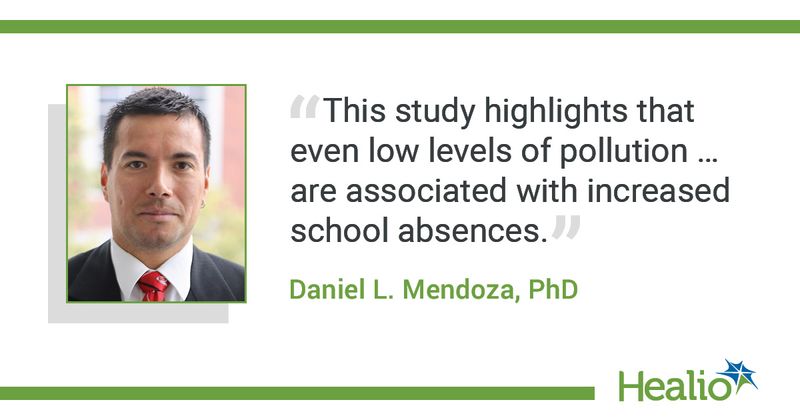Air pollution levels correlate with increase in school absences
In Salt Lake City, Utah, school absences appear to rise when the air quality worsens, according to a new study published in Environmental Research Letters.
Daniel L. Mendoza, PhD, research assistant professor in the department of atmospheric sciences, adjunct assistant professor in the division of respiratory, critical care and occupational pulmonary medicine at the University of Utah, visiting assistant professor in the department of city and metropolitan planning and senior scientist at the NEXUS institute, and colleagues analyzed school absence data from 36 schools in the Salt Lake City School District and compared results with ozone and air particulate matter levels in the region from 2015 to 2018.

The researchers estimated rate ratios for the association between outdoor pollutant concentrations and school absences using a generalized estimating equations model and estimated lost school revenue, productivity and family economic burden associated with air pollution.
This kind of neighborhood-level air-quality modeling requires a network of research-quality air sensors; such a network has been building in the Salt Lake Valley over the last several years, operated by the university and the state Division of Air Quality. That network includes mobile sensors on light rail trains as well as stationary research and regulatory grade sensors, according to a press release.
“The dense air-quality observation platforms we employed allowed us to personalize pollutant exposure at the individual school level and, through the use of daily absence data for each individual school, we were able to more clearly examine the effects of air pollution on absences at a granular scale,” Mendoza told Healio.
Across the school district, the researchers found that pollution exposure was associated with a rate ratio of 1.02 absences per g/m3 increase in fine particulate matter and 1.01 absences per parts per billion (ppb) increase of ozone. The worst increase in absences happened the day after high pollution exposure, according to the researchers.
Even air pollution exposure below the air-quality index breakpoints for good air quality was also associated with significant school absences (1.04 absences per g/m3 increase in particulate matter; 1.01 absences per increase in ppb).
Further, “we found that low pollution level cumulative exposure over 3 to 5 days results in absenteeism rates that are equivalent, and sometimes higher, than following high pollution exposure,” Mendoza said.
“This study highlights that even low levels of pollution, those considered safe or green in the AQI scale, are associated with increased school absences. It is possible that during high pollution level days, parents and teachers are more careful to reduce children’s exposure by taking preventive measures including keeping kids inside during recess and limiting outdoor playtime. Therefore, low pollution days may inadvertently be more dangerous because fewer protective measures are taken. This can be particularly hazardous to students with respiratory issues, such as asthma, or other health conditions that can be exacerbated by exposure to air pollution,” Mendoza said.
The researchers estimated that reducing pollution by 50% may save $426,000 per year districtwide for both schools and families, especially in socioeconomically disadvantaged areas.
“The economic impact analysis provides a monetary quantification of absenteeism due to air pollution and identifies the affected parties, which are the schools, families and overall economy,” Mendoza said. “These findings facilitate discussions with stakeholders, including legislators, who can more easily identify and determine risk-benefit policies.”
Although the study analyzed elementary, middle and high school students, researchers surmise that elementary-aged students may be most vulnerable to developing health issues from air pollution.
“Future directions should include a focus on sociodemographic factors, pre-existing health conditions and previous schools attended,” Mendoza said. “Socioeconomic status can have a notable impact on baseline school attendance and should be considered a significant confounding variable. Understanding the various impacts on students with diagnosed conditions would shed light on differential sensitivity. Lastly, previous exposure at an earlier age could have a marked impact on future health outcomes.”
